Best drought-tolerant plants: 8 flowering beauties with minimal watering needs
Drought-tolerant plants make garden maintenance easier – here are eight top choices to grow

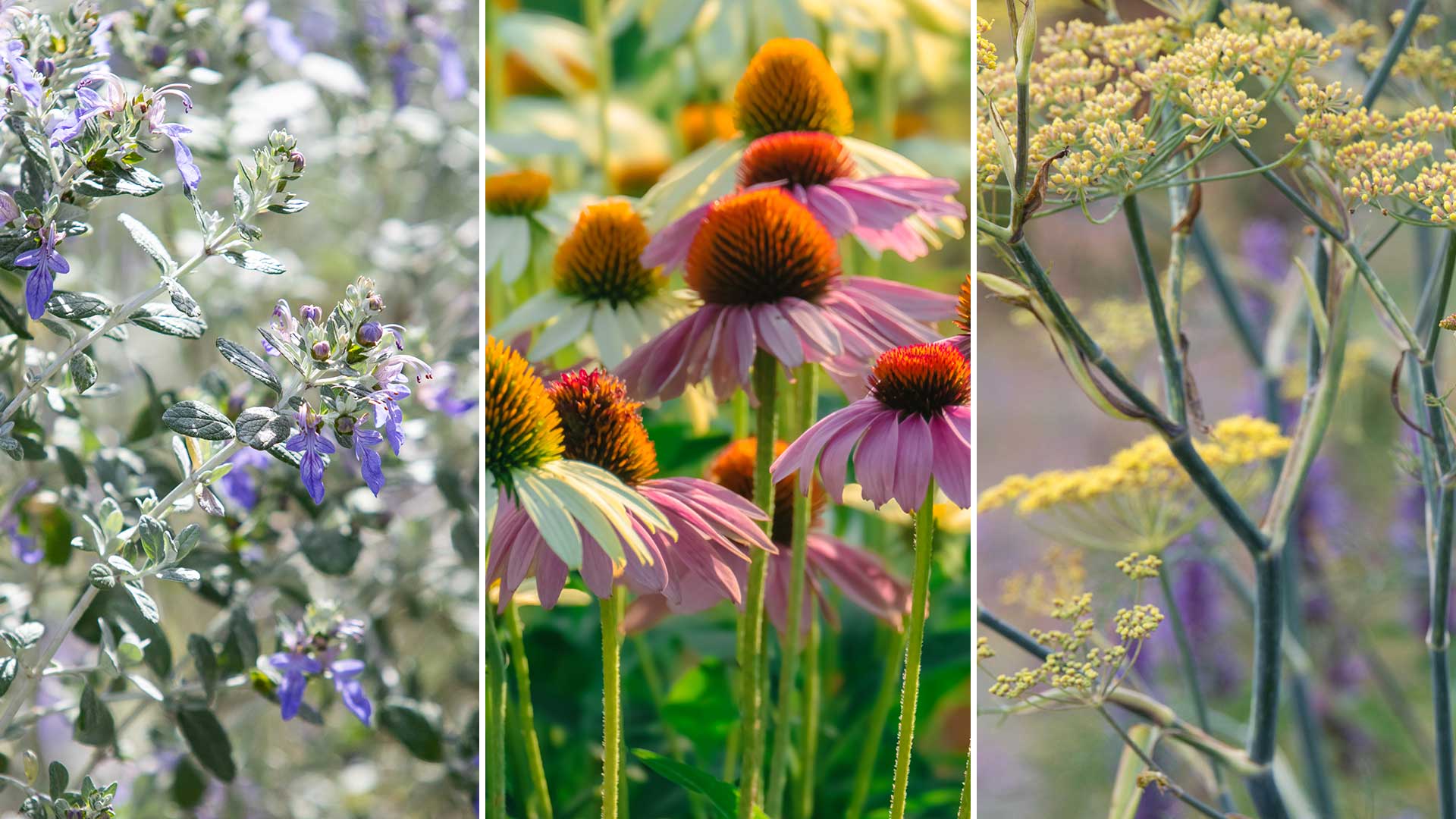
Opting for drought-tolerant plants reduces the need for endless watering in summer, which – let's face it – can turn into a bit of a slog. Choosing them doesn't mean you need to sacrifice on aesthetics, either, as there are plenty of beautiful, blooming options.
There's a growing garden trend for more sustainable planting schemes, and these tougher options fit the bill perfectly. As Chris Bonnett of GardeningExpress says, "With hotter summers and hosepipe bans becoming more common, drought-tolerant plants are a smart choice for gardeners." What's more, many have additional benefits, such as being wildlife-friendly, he adds.
Below, you'll find eight top picks that, once established, need little water to thrive. There's also plenty of practical advice on how to grow them successfully, as well as suggestions for specific varieties.
8 drought-tolerant plants to grow in your garden
Harriet Worsley, managing director at Worsley Design & Consultancy, explains why developing a drought-resistant garden is so on-trend: "As the summer heat gets more extreme and heatwaves are becoming part of the new normal for the Great British Summer, I’m always looking for new drought-tolerant plants for my planting schemes."
"Whenever I’m on holiday in countries with hot summer climates, I look at what is growing wild, and how I could incorporate these into my planting schemes," she continues."
"In Greece and Portugal, I’ve seen wild fennel; in Spain, it’s thyme and lavender growing through what looks like rock on the scrubby hillsides. In South Africa, it's pelargoniums on the mountains and agapanthus in the valleys."
1. Fennel
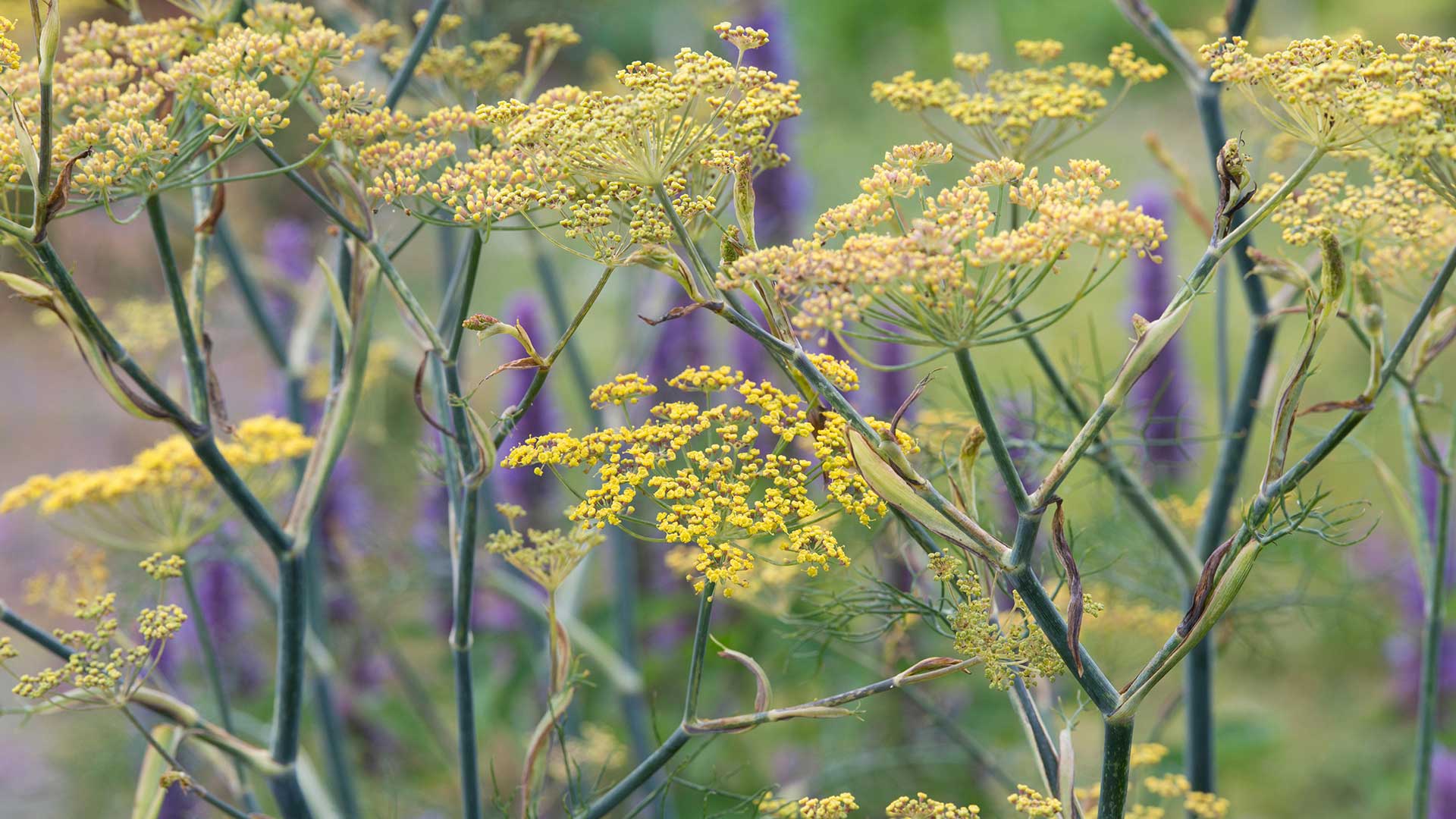
Fennel flowers are a magnet for bees
"Fennel is a fabulous plant; you can eat it, add it to salads, the yellow flowers look beautiful in a vase, and it creates a haze of frothy height all summer like smoke curling up through a border," says Harriet. "My favourite is the 'Giant Bronze' fennel that is perfect for a grey and blue planting scheme."
Sign up to our free daily email for the latest royal and entertainment news, interesting opinion, expert advice on styling and beauty trends, and no-nonsense guides to the health and wellness questions you want answered.
Potted "Giant Bronze" fennel plants are available from Crocus, or you can grow your own from seeds. Keep this perennial in a sunny and sheltered location, ensuring the soil is well-draining. It will die back before winter, but regrows in the spring.
Note there are two main types of fennel you can grow – while the bulb-forming Florence fennel needs much more water, it can still be a good contender for vegetable gardens.

Garden designer Harriet Worsley established Worsley Design & Consultancy after studying Garden Design and Planting Design, as well as pursuing her RHS Certificate of Horticulture. She worked as a landscape designer for a firm in Notting Hill, and as a weekly volunteer at the Royal Botanic Gardens, Kew, where she honed her plant knowledge. Harriet has a first-class degree from Central Saint Martins, where she has taught for twenty years, is a published author, and lives in London.
2. Pelargonium

"Lord Bute" pelargoniums add drama to pots with richly-coloured blooms
"For window boxes, the fail-safe plant that shouldn’t die if you don’t water every day is the pelargonium (often sold as geraniums)," says Harriet. "I like the pure white and the dark wine-red ones, and you can get them trailing and upright.
"Water them once a week (minimum) and they love a fortnightly liquid feed in the summer," she adds. Deadhead blooms once they have faded by snapping the stems off at the base. Pelargoniums are frost tender, but you can bring them indoors before winter to keep on a sunny windowsill, then move them back outdoors once the weather warms up again.
Try the award-winning "Lord Bute", available to buy from Crocus from autumn, for an eye-catching addition to your summer patio containers.
3. Tree germander
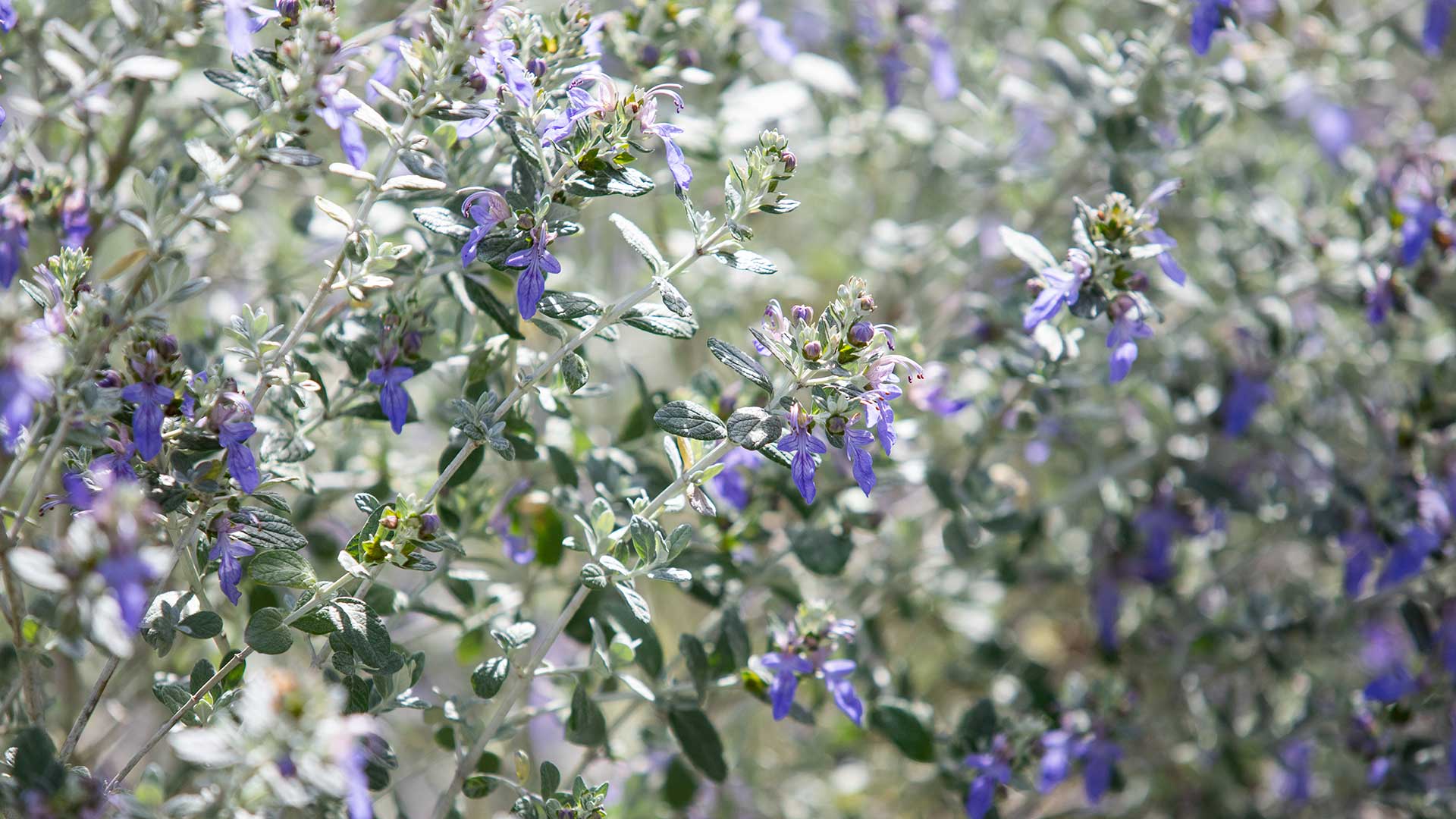
These shrubs offer small vibrant flowers in summer
Harriet likes to take ideas from municipal planting abroad, in areas such as car parks. These are the really tough "doers" that won’t buckle with neglect and mistreatment, she explains, adding how on a 36-degree day in Madrid a few weeks ago, she loved the punky grey Teucrian fruticans growing down the streets.
Also known as tree germander, this is an evergreen shrub with delicate blue blooms in summer that attract butterflies. Sunshine and well-draining soil are key for keeping it healthy, and it's well-suited to large pots. Try it for a Mediterranean garden theme.
4. Lavender
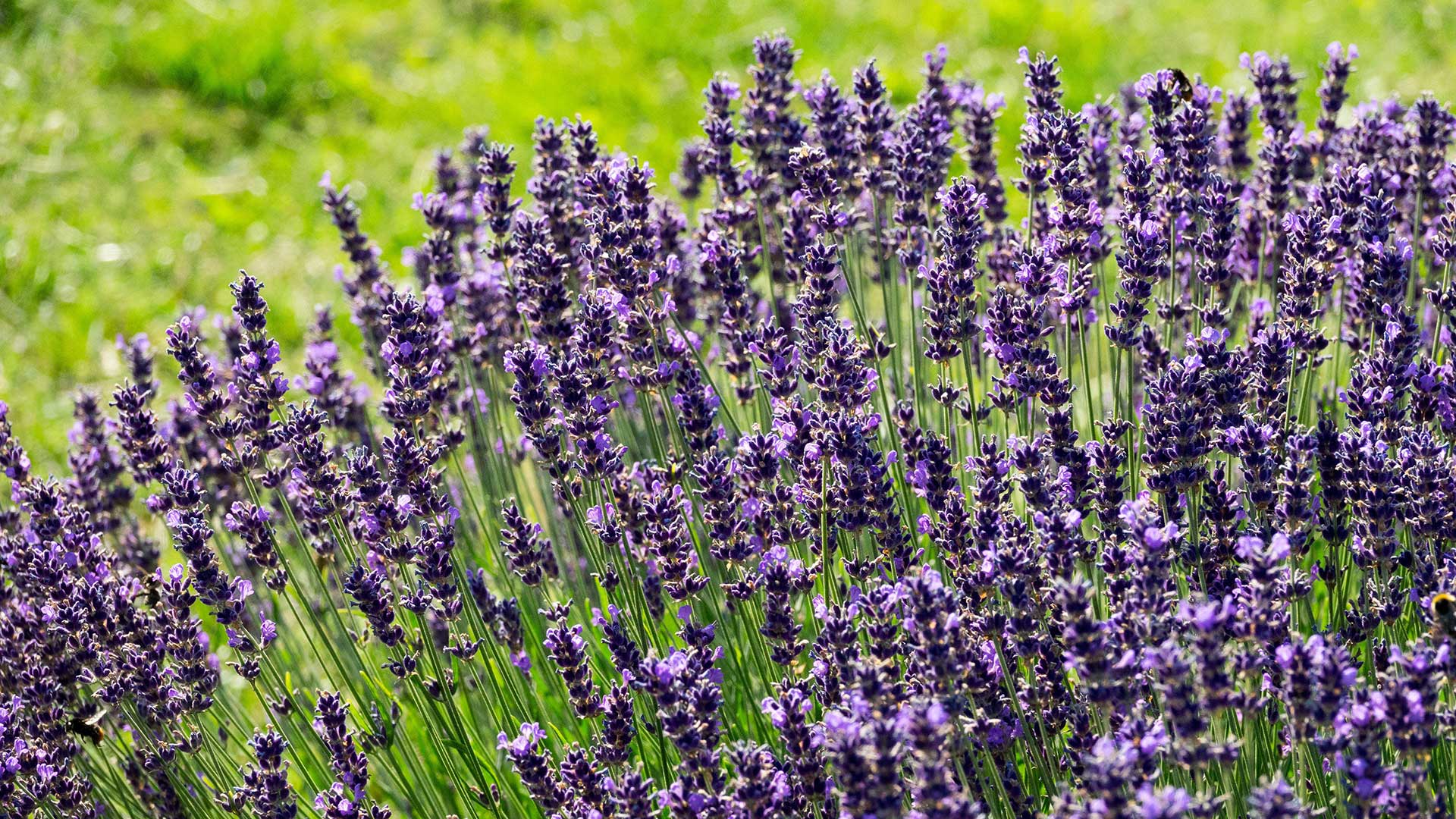
"Hidcote Blue" lavender
Another silvery-leaved plant hailing from Mediterranean climes is lavender, which Chris adds to our list. "Once established, lavender is a great drought-tolerant plant that can thrive in sunny and dry conditions," he says. "Lavender also welcomes pollinators, making it perfect for gardeners who want to see more bees and butterflies in their space.
"When planting, choose a spot with full sun and good drainage; ideally, sand or gravel soil works best," Chris continues. "Avoid using too much fertiliser, as this can reduce flowering and make the plant leggy."
Emma Fell, head of horticulture at Hillier Garden Centres, also recommends it, highlighting how it's naturally resistant to many common pests and diseases.
Try "Hidcote Blue" from GardeningExpress, a popular English variety.

Chris Bonnett is the founder of online garden centre GardeningExpress and has been in the horticulture industry for over 20 years. Whilst he was a teenager he combined his passion for the outdoors with the internet to deliver quality plants across the UK and Europe.

Emma is a respected expert in the world of plants and plant care. Throughout her career, Emma has been responsible for sourcing and selecting new plants, including the ones that feature in Hillier's illustrious show gardens, such as at RHS Chelsea and BBC Gardeners' World, as well as championing the company's learning and development strategy. Her role as head of horticulture means that she ensures Hillier Garden Centres offer customers the highest quality of plants for their gardens.
5. Passion flower
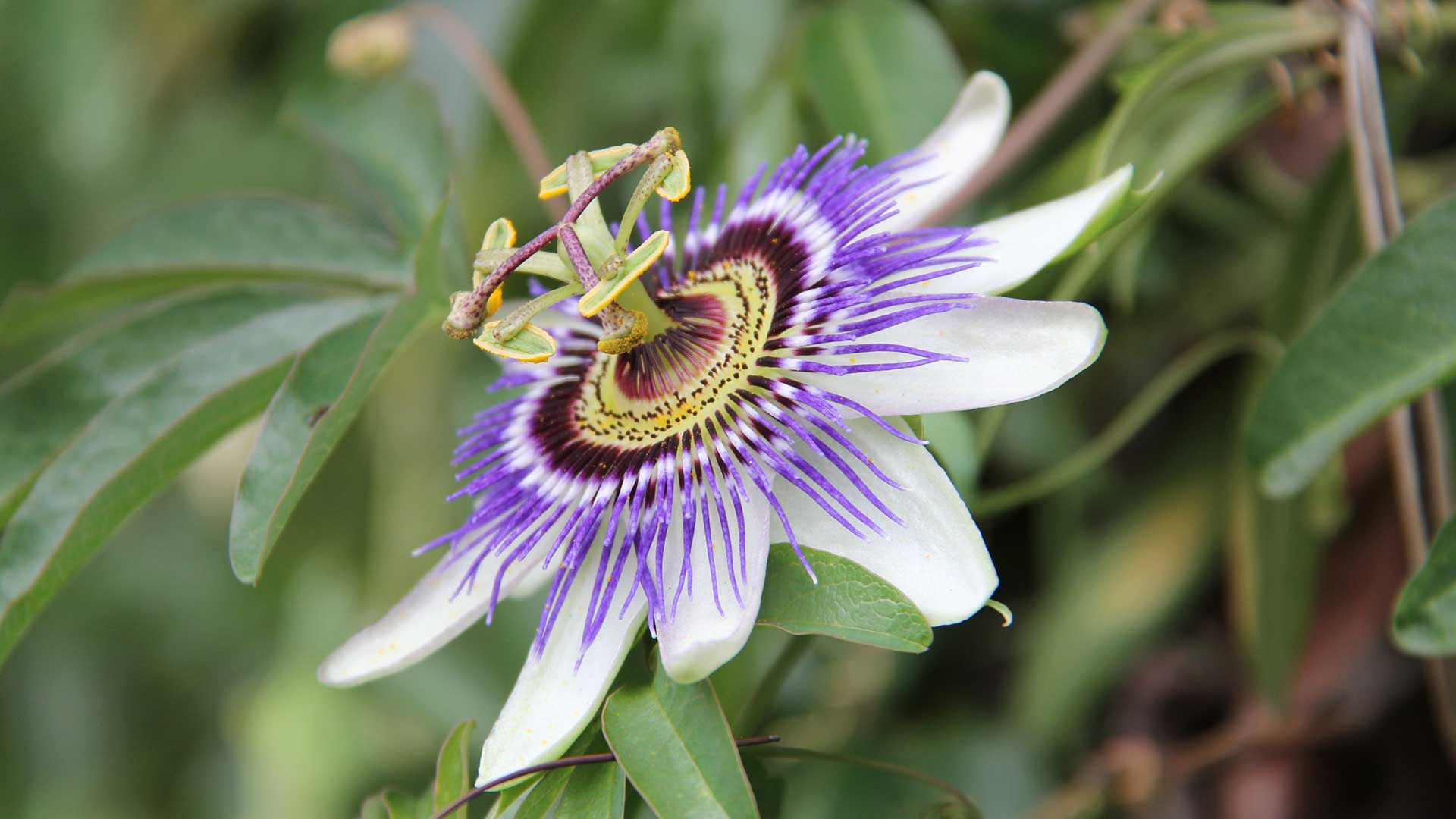
Opt for a drought-tolerant climber
If you're on the lookout for climbing drought-tolerant plants, consider passion flower, another suggestion from Chris. "Its white flowers have central rings of purple, blue and white spiky filaments, making it a great show-stopper for gardeners who are looking for visual impact with minimal fuss. It adds vertical interest, making it suitable for those with smaller gardens, too.
"Make sure you opt for a sunny, sheltered position and give the plant support to climb on," he adds. You can buy passion flower plants from GardeningExpress.
6. Echinacea
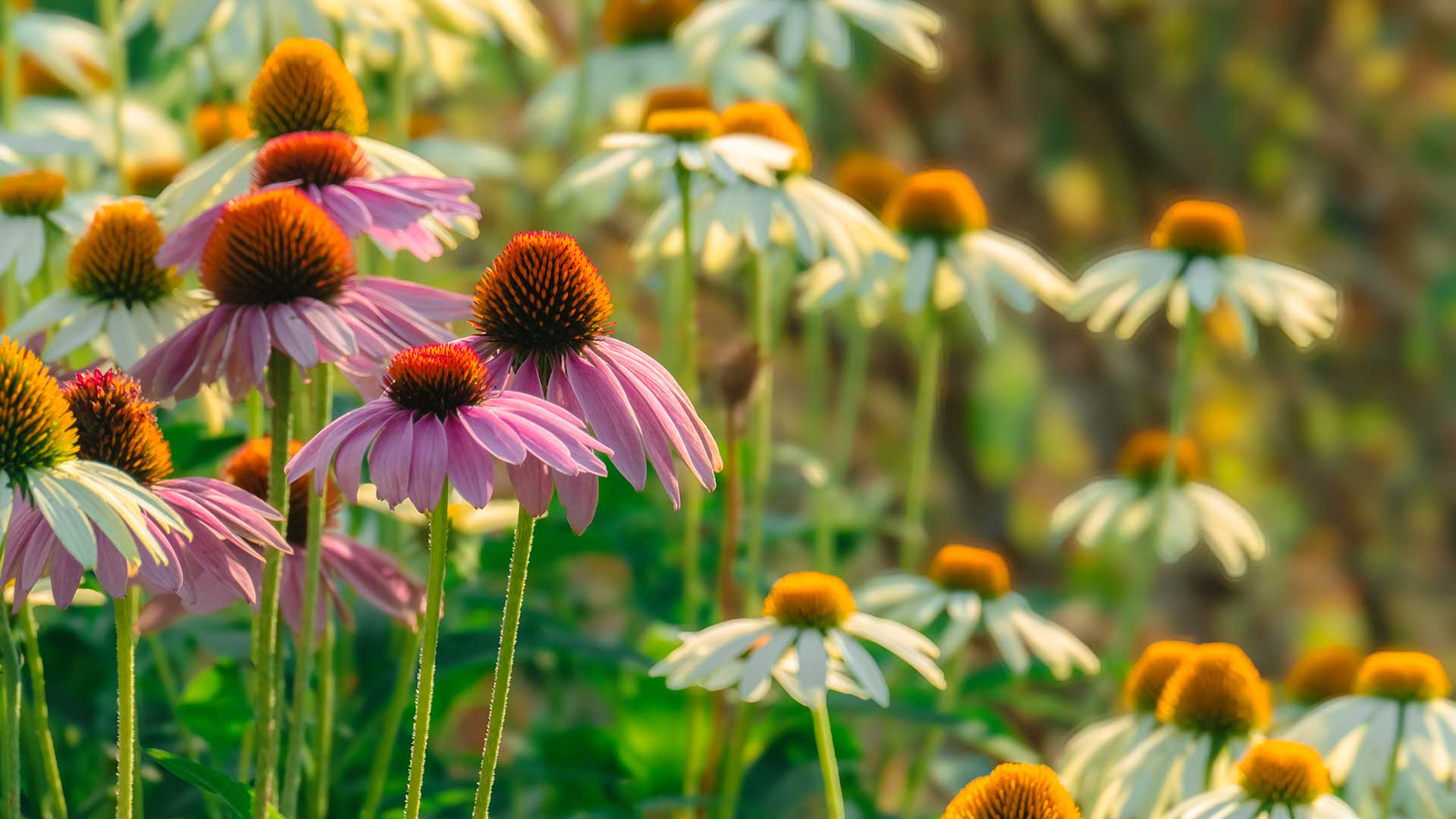
A popular flower in a wide range of hues
Echinaceas, or coneflowers, are excellent plants for pollinators. As Chris points out, they also provide food for birds later in the season, thanks to their seed heads.
"Coneflowers can handle dry and sunny conditions and will continue to produce their bold, daisy-like blooms through summer into early autumn," he says. "Plant in full sun and well-drained soil. Once rooted, the plants will rarely need watering except in extended droughts."
While purple varieties are a classic choice, echinaceas also come in white, red, pink, orange, and even green shades. Try "White Swan" from GardeningExpress for white petals and golden centres, or "Summer Cocktail" from Crocus for peachy-pink hues.
7. Sedum
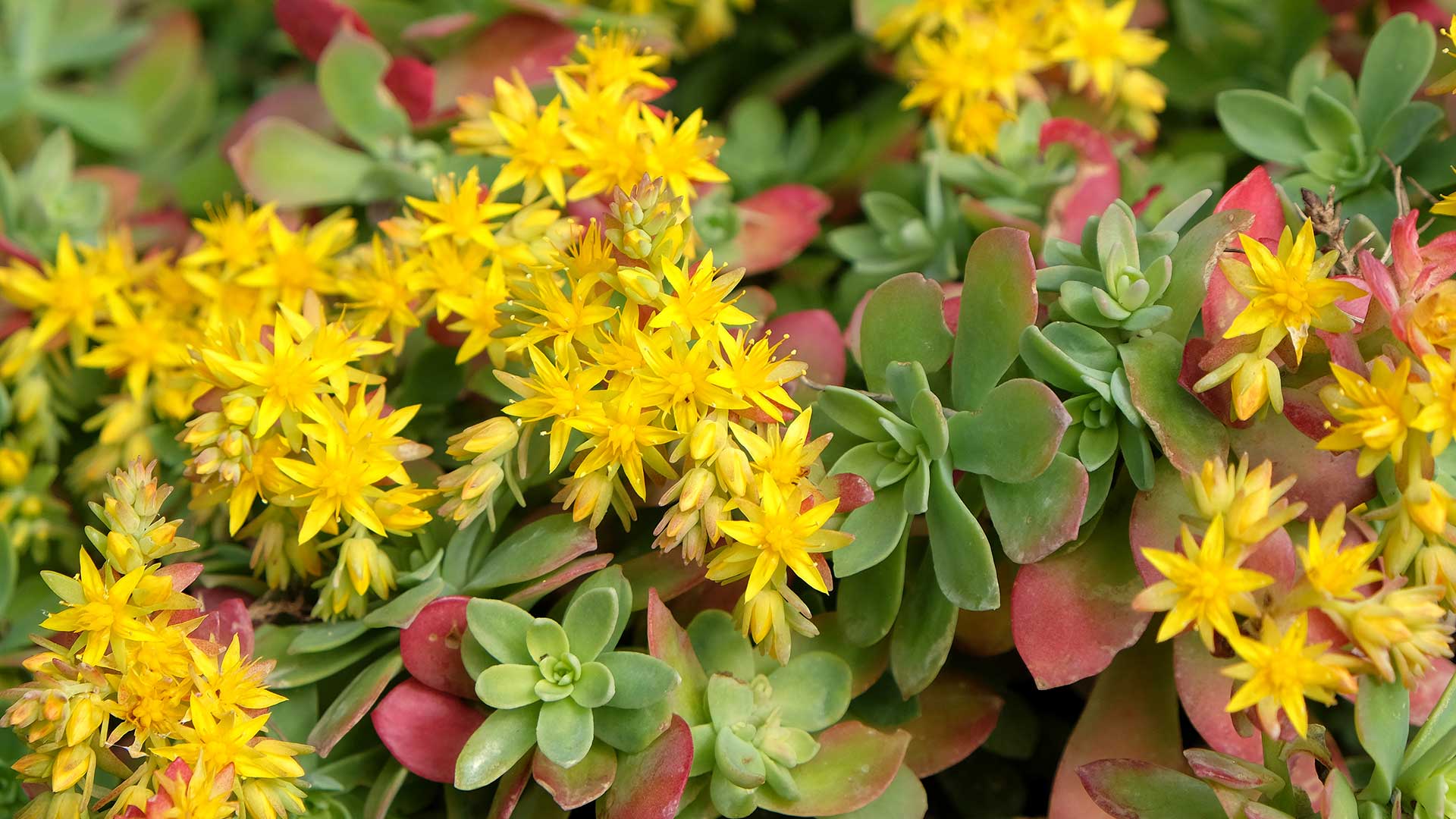
Sedums are easy-care options for covering bare soil
Emma also recommends sedums, explaining that, as succulents, they store water in their leaves and can tolerate dry conditions well. They're a popular, low-fuss ground cover plant, working well in rockeries and at the front of flowerbeds. There are lots of different varieties available, offering a range of textures and a spectrum of shades.
Again, sunshine and well-draining soil are a must. Too much moisture can lead to problems with root rot. Keep this in mind if you're growing yours in a pot – you may want to move it under cover during bouts of winter rain.
8. Allium
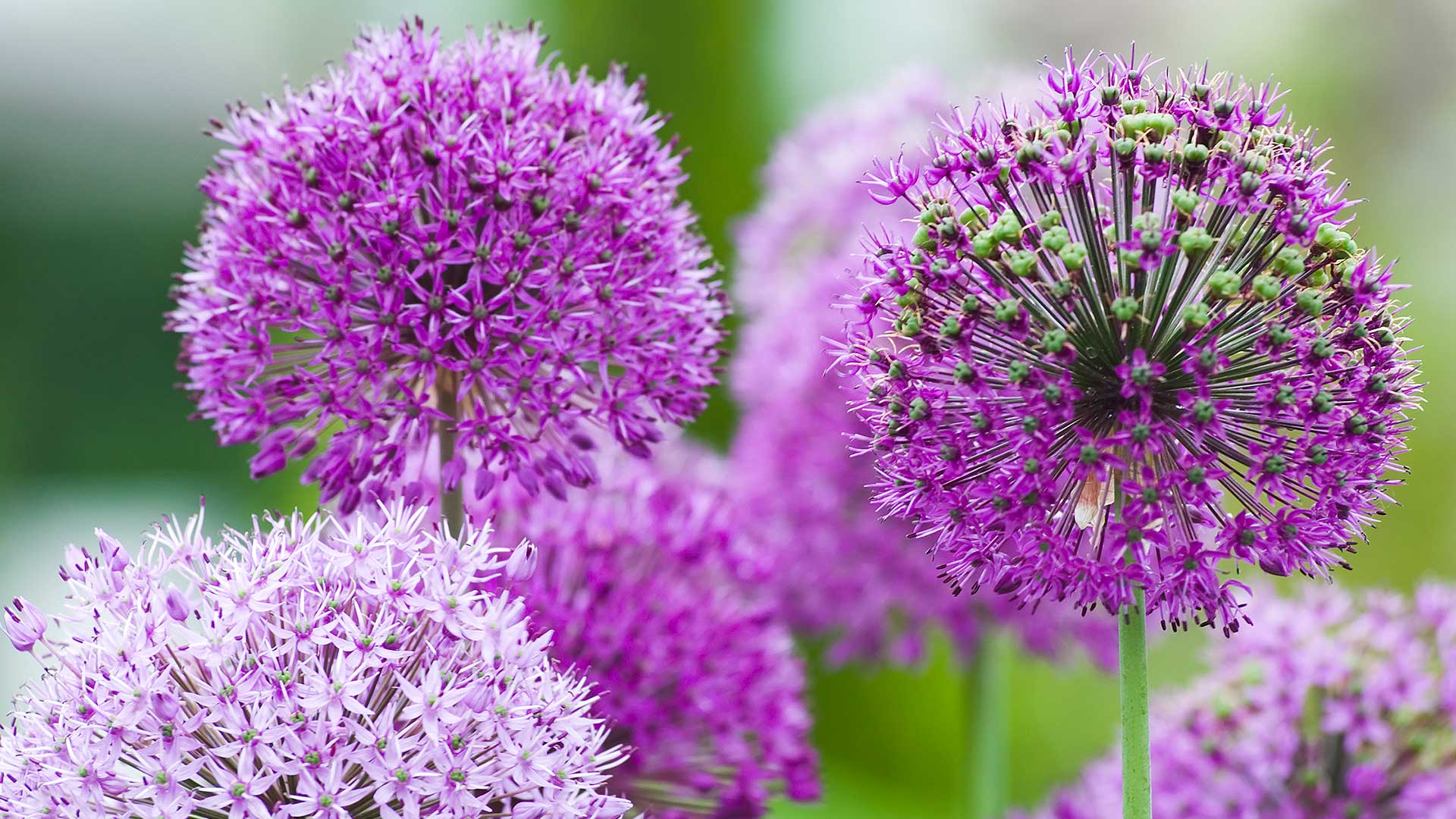
Planting spring bulbs is a must for a spectacular show early in the year
Many spring bulbs are drought-tolerant, making them an easy way to enjoy early bursts of colour in your garden. Emma particularly recommends alliums for our list, highlighting their tall stems and stunning, spherical blooms. She also notes how their scent is believed to repel many pests, making them excellent companion plants.
Once the flowers have faded, leave them intact, as the seed heads add sculptural interest to the winter garden. As with most bulbs, good drainage is essential.
FAQs
Are wildflowers drought-tolerant?
Dr Emily Attlee, a conservation scientist and co-founder of Seedball, says most native wildflowers have evolved to cope with drought once established. "Many store seeds beneath the soil, ready to regenerate when conditions improve. So, if you're looking to future-proof your garden, wildflowers are a smart, sustainable choice."
Her examples include oxeye daisy, meadow cranesbill, and musk mallow. Scattering a mix of seeds into flowerbeds is an easy way to try the wildflower garden border trend.
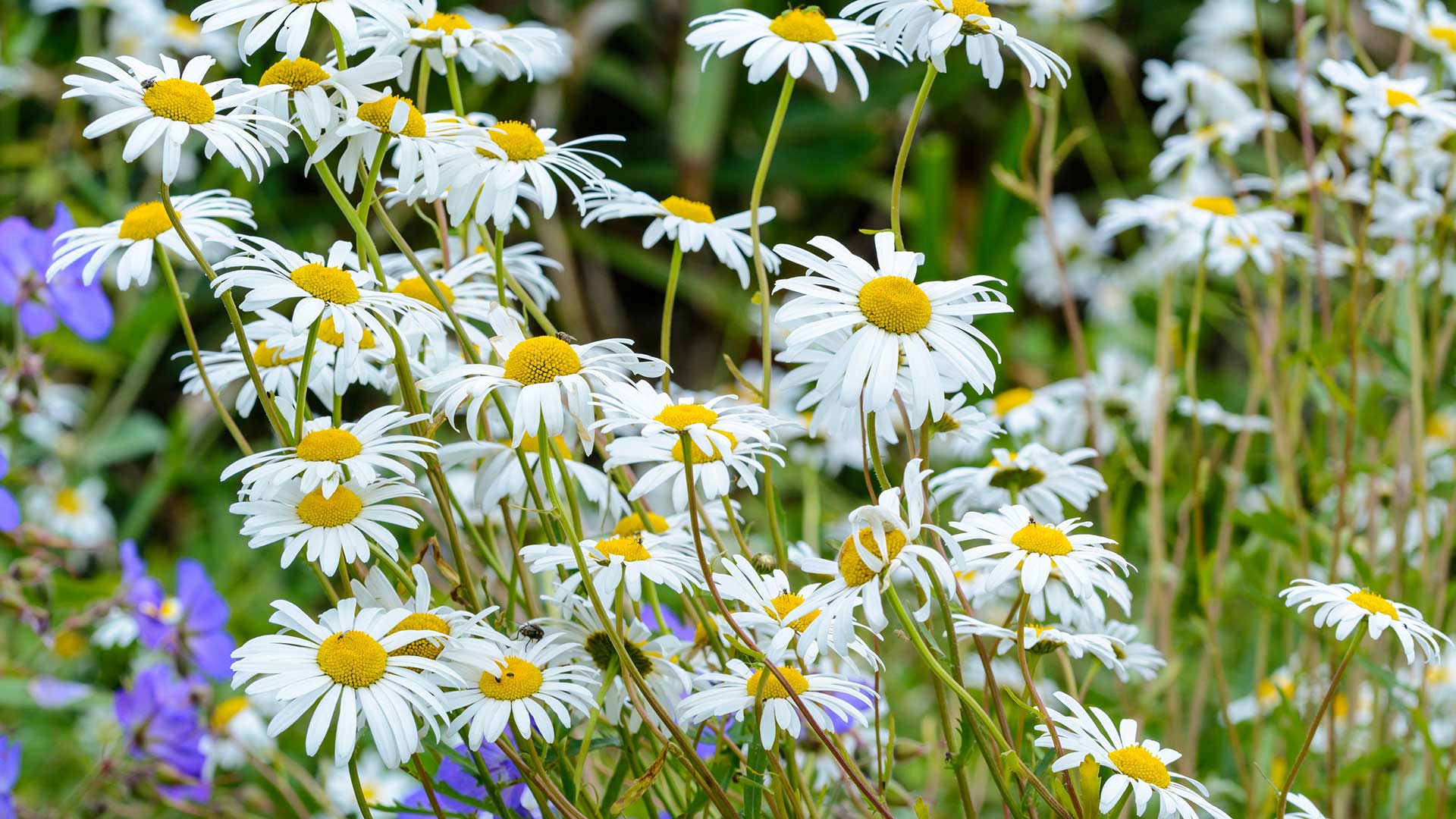
Oxeye daisies are low-maintenance and full of cheer
Do drought-tolerant plants need any watering at all?
It's important to note that most drought-tolerant plants will need proper watering at first to help them establish a strong root system. After that, a little water now and then, particularly during hot, dry weather, should help keep them healthy. Those grown in pots may need slightly more attention than those in the ground, as containers tend to dry out quicker.
While drought-tolerant plants can make summer gardening easier, if you're looking for tasks to tick off, there is still plenty to do. Our guide to summer gardening jobs has lots of ideas.

The garden was always a big part of Holly's life growing up, as was the surrounding New Forest where she lived. Her appreciation for the great outdoors has only grown since then; she's been an allotment keeper, a professional gardener, and a botanical illustrator. Over three years ago, Holly started writing about plants and outdoor living full-time, first for Gardeningetc.com and now for popular lifestyle titles such as Homes & Gardens.
You must confirm your public display name before commenting
Please logout and then login again, you will then be prompted to enter your display name.